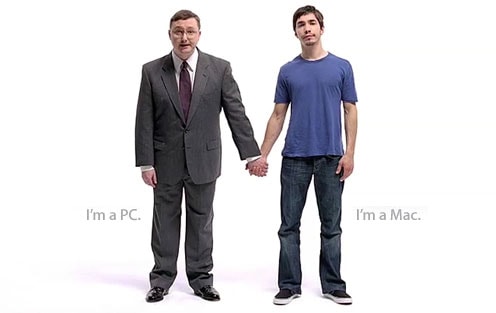There two main reasons why people go online:
To be informed and to be entertained.
The first, to be informed, is because they need a solution to a problem. A user is looking for a way to be educated on something and so they go online to obtain such education.
This informed reasoning can be as simple as someone searching for “the closest sushi restaurant near me” or as complex as, “how to get my face to stop aging without paying more than $100 for skincare“.
The latter, to be entertained, is because as a population we have become reliant on using the web to entertain ourselves before bed, our children at restaurants, and our friends on how cool we are.
The web is now an entertainment hub as cable TV has quickly become a thing in the past with a billion videos being watched on YouTube each day. Instagram even wants in on the television content competition with their launch of IGTV.
And when we’re not watching videos, we’re scrolling through our social media news feeds, listening to podcasts, or reading blog posts. There are seemingly endless entertainment outlets to choose from.
Clearly, the web has really become a safe haven for those who need to be informed (and quickly) and entertained (and often).
Cool news, but what does that have to do with your customers?
A LOT!
Your customers are the real reason why you have a website to begin with and why you spend so much time trying to create content that both informs and entertains. It is all an effort to attract users to your brand, which usually looks like a desperate effort on your part.
“Hey! Look at me! I exist, and I’m better than all the rest! Come trust me for your info and come be entertained by my content!“
So, if our whole purpose is to attract users to drive conversions and engagement, why wouldn’t we go to users and bluntly ask them what they want to be informed of and entertained by?
Why wouldn’t we want to be the source of information and entertainment for them?
A bit mind-blowing isn’t it?
Here’s a list of questions you should poll your customers and potential customers for in order to gain new content ideas to both inform and entertain.
Note: For those who don’t have actual products, “Product X” can easily be swapped with “Use X Service” or “X Trial”.
Inform
When You’re Looking to Purchase X What Excites You?’
When was the last time you purchased something and was so excited about it that you immediately phoned your friends? Or, a bit more realistically these days, you took a photo with the product, put it on your Instagram story, and uploaded it to Facebook?
I’m actually guilty of this very recently.
I recently purchased a set of outdoor reclining chairs from Groupon. The whole reason I even discovered these amazing chairs was because another couple that we went camping with brought them and we got to “test them out.”
All weekend long this poor couple hardly got the opportunity to sit in their own camping chairs because my fiance and I refused to get out of them.
They were so comfortable!
I mean, can’t you imagine how sweet it would be lounging in these bad boys around the campfire or on the lake? Talk about nap-friendly!
So naturally, the first thing I do once I get reception back onto my phone is to purchase a pair. They arrived within three days!
Not only was I excited about the product itself but I was even more excited when it came so incredibly fast from Groupon, a company who isn’t known for two-day shipping.
It only made sense to document when the box arrived on my doorstep.
I took videos of the box, myself opening the box, and the chairs expanded in our living room looking exactly like what I expected. I then eagerly added the videos to my Instagram story.
Did you take note of all the moments of excitement through this process? If not, let me recap it for you:
- Trying out the product for myself and falling in love.
- Easily ordering it online.
- It being delivered so stinking fast.
- The fun of documenting when it arrived.
- The product looking exactly like what I expected.
How can Groupon or the manufacturers of the chairs capitalize on this excitement? They can start with a follow-up email and ask the key question if I am satisfied with the product.
When I come back voting a 10/10 in all of their poll questions, they can then reach out to me again and ask what I liked best about the experience: was it the buying process, the product itself, or what was it?
Understanding what excites a customer can help you narrow in on what the best sections of your buying process are, even if it’s the product itself, and give you new ideas for content.
For this chair example, after learning all of the multiple parts of excitement I experienced, the manufacturer can then reach out to me and ask if I’d be willing to be an advocate for their product.
This would look like a recorded video or testimonial about my experience, which in doing so the manufacturer would refund me the cost of the chairs and maybe even give me another matching set as an incentive.
The manufacturer gets amazing content created by an exciting customer and me, the customer, gets a new matching set of chairs all from asking a simple question. #boom
When You’re Looking to Purchase X, What Scares You?
A majority of purchase decisions can come with some sort of hesitation.
There are so many different options out there now that making any purchase, even at the dollar store, can be a little nerve-wracking.
This hesitation can come from working with a new company and not knowing much about their reputation or products.
Other hesitations can stem from a lack of understanding (e.g., “Will this product actually help solve my problem or is it just going to make things worse?”).
The only part that made me feel a bit hesitant about purchasing the chairs was thinking it was going to take forever to ship and a return would be difficult since it was from Groupon. Being that there were more pros than cons, I took the risk and made the purchase anyway. Not all of your customers are going to, though.
What makes a potential customer hesitant about purchasing your product is worth knowing and a great place to start building content around. This scare is something that you can’t just guess. You need to actually ask what causes hesitation to both potential and existing customers and not assume.
Once you get to the bottom of it, focus on these fears and develop content topics for an entire “anti-buying fear” campaign that educates users against their fears.
The less fear caused throughout the buying funnel the better. Plus, this exercise is a great way to get a bit more personal with your customers and show them that you really care about their entire journey, not just the part where they buy.
Knowing that my only hesitation was the shipping and returning issue, Groupon can add more of an emphasis of how easy it is to return products with them, and how fast you can expect to receive the product.
How Frequently Do You Need to Use Product X and Why?
If the product or service you provide is something that we as humans need on a regular basis, like toilet paper, trash bags, water, air, coffee, you still need to ask your customers why they specifically need it on a regular basis.
One customer may need to purchase toilet paper each week because they’re stocking their office toilets. While another customer may be stocking their guest bathroom.
By asking how frequently your customers need or use your products/services you’ll gain a better understanding of who they are and why they purchase your product to begin with.
You can utilize this type of information to create content for office-related topics to attract the customer who purchases toilet paper for their office.
If a majority of your customers are stocking their guest bathrooms with your toilet paper, they clearly care about having guests over which means you can create content about hosting house parties or trendy bathroom decor ideas.
If you never asked your customers how frequently they use your product you’d be creating generic content on topics like the top 10 types of toilet paper fabric. #yawn
Instead, create informational content that is actually related to their usage and needed reasoning.
What Is the Biggest Problem You Face Daily?
For me, not having reclining camp chairs wasn’t necessarily a problem that I faced daily. That was, until I knew reclining camp chairs existed. It then became a problem not having them.
Perhaps for you, the product or service you sell has a bigger issue attached to it.
Maybe your product or service is created specifically as a solution to an issue. If that’s the case, ask your customers what their biggest problems are and what issues they face regularly.
Non-reclining camp chairs probably aren’t going to be the first thing that pops into their head, but analyze what the first few things are that they think of.
Gaining a better understanding of what your customers face regularly will tell you what kind of content solutions you can provide for them.
This goes back to the information side of the web, but we can do this in an entertaining way.
We can create content that explains how they can make their lives easier, simpler, more productive, or whatever their issues are – but do so in an entertaining way using videos, infographics, blog posts, or case studies.
That toilet paper company clearly provides a solution to an issue, but toilet paper is kind of boring.
So Fluffy, an older brand of TP that may not actually be on the market anymore, ran a campaign to showcase how durable their toilet paper was since one issue TP users deal with is poorly constructed paper.
Another issue toilet paper users can face is bowel issues. Whether it’s lack of movement, too much movement, or not enough movement it can be a regular problem that TP users vocalize.
That’s why Urban Detox worked with a toilet paper company to create a campaign educating toilet paper users in New York City how to analyze their “turd babies” to improve their health.
The campaign was used to promote a healthy lifestyle and educate the public on a very important issue.
You don’t always need to go as far as “turd babies” with your content, but you should be thinking of ways to not just inform but entertain your customers with your content based on their needs.
Entertain
What’s More Important to You? Finding an Affordable Product X or Owning the Best Product X?
Do you know what your customer cares about most?
I can tell you one thing, it’s not always about finding a solution to their problem.
If that was the case, joggers wouldn’t be a thing. The entire point of joggers is redundant.
Sweatpants should be comfortable, loose fitting, inexpensive, and usually just worn at home.
Joggers are sweatpants’ new and hip step-sister from another mister. They are tight, over-priced, generally uncomfortable because there’s a lot less fabric, and they’re cool which means you can casually dress them up with heels or a gold watch outside of your couch.
Regardless of how I may feel about them, to a majority of people between the ages of 16 and 35, joggers are necessary. Customers are willing to pay $54.95 for a pair of upgraded sweatpants because they are a cool, new trendy item to own.
If we don’t ask our customers what is more important to them – the price tag or owning the product – then we’ll constantly be playing a guessing game of what we think they care most about.
Instead of assuming everyone likes a good deal and creating content about top 10 affordable joggers, just ask your customers where their values really lie and create content that matches such values.
Affordability may not be it. And, if that’s the case, we’ve been creating the wrong kind of content for our demographic all along.
Why Do You Like Us More Than Our Competitors?
Listen here, folks. This answer is going to be gold.
Whatever your customer responds with here you need to write down and utilize it. Whatever your key advantages are over your competitors your customer’s are going to be the first to tell you, and honestly.

Sometimes it’s really just because your logo looks a lot cooler. Other times there is a philosophical answer behind it like how much the customer appreciates the CEO’s vision for the company and supports its employees over the competitor.
Whatever the answer may be, capitalize on this, flaunt it, and let the world know why you’re so much more amazing than your competitor.
Create an entire marketing campaign around this messaging and do so in an entertaining way for users.
You don’t have to bluntly throw your competitor under the bus though, but you do need to echo why your customer’s love you and flaunt it.

For Mac, they asked their customers and found out one of the best things about Macs is that they work. As simple as that. PC’s can come with a lot of issues whereas Mac customers love the ease, simplicity, and reliability knowing that their Mac is almost always going to turn on without any issues.
If you can poke fun at your competitor, then do so, but just be ready to have a PR strategy if things go south.
Summary
There are tons of amazing tools to help us discover new content topics, but sometimes the best way is to go directly to the source and ask our customers.
Based on our customers’ responses, we can then craft amazing content strategies focusing on new ways to inform and entertain them.
Image Credits
All screenshots taken by author, June 2018







![[SEO, PPC & Attribution] Unlocking The Power Of Offline Marketing In A Digital World](https://www.searchenginejournal.com/wp-content/uploads/2025/03/sidebar1x-534.png)